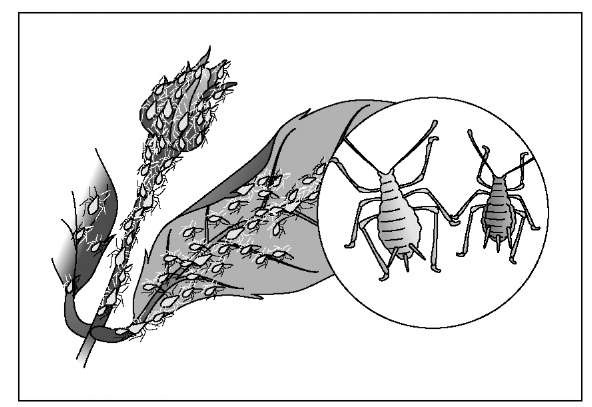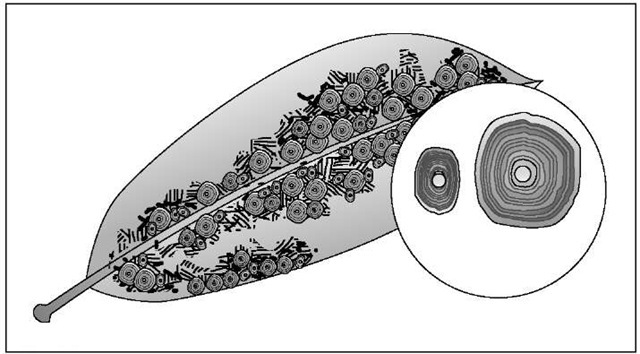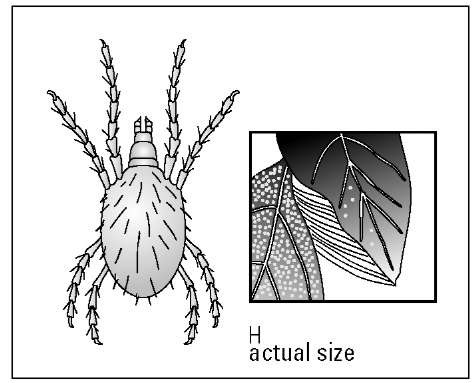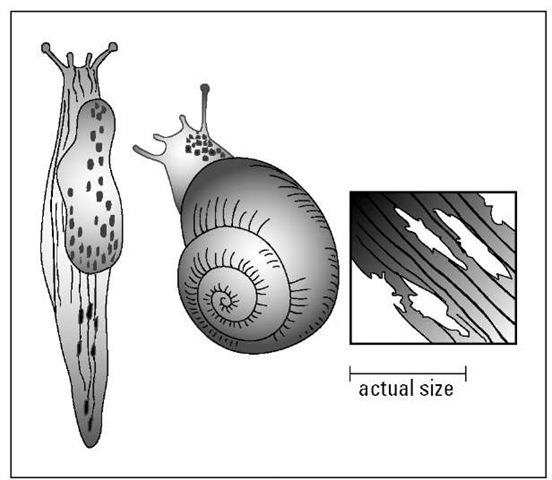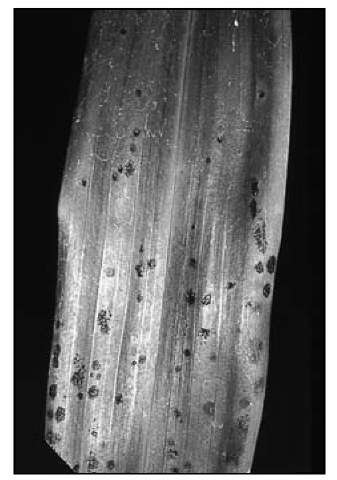In This Topic
- Running a clean operation
- Beating bugs safely and effectively
- Diagnosing and curing diseases
- Controlling other unwanted critters
Although orchids are relatively pest-free plants, if you have them long enough, you’ll eventually have to deal with an invasion of some bug or disease. Fortunately, there aren’t many pests to contend with and they aren’t that difficult to identify. In this topic, I stress the safest and most effective ways to control these problems.
Always start with the least toxic solution. If you are careful and inspect your orchids on a regular basis and detect the problems before they progress too far, you will rarely have to resort to more poisonous materials. The more poisonous materials should be your last line of defense.
Preventing Problems Before Theu Start
Most insect and disease problems can be prevented by good plant sanitation. Here are some steps to take to prevent pest problems from getting out of hand:
- Always sterilize your cutting tools. See the nearby sidebar, “How to sterilize your tools,” for more information.
- Make a practice of regularly inspecting the tips of new growth and the undersides of the leaves. This is where most bugs hang out.
- Provide the best growing conditions possible. When orchids are under stress, they’re more susceptible to disease and insect infestations.
- When repotting, always use new or cleaned and sterilized pots.
- Buy plants that are clean and healthy. Beware of the “bargain” or leftover plants; many have serious problems. Unless they’re in excellent condition, stay away from them.
- Don’t allow weeds to infest your pots of orchids. They can harbor insects.
- Keep the floor or ground in your growing area free of weeds, dead leaves, and dead flowers.
How to sterilize your tools
These are the two methods that I use for sterilization:
I Chemical sterilization: Dilute household bleach — one part bleach to nine parts water. Soak your tools in them for a few minutes before you use them. Most chemicals that are used to sterilize tools, like bleach, are highly corrosive, so after you’ve sterilized these tools, be sure to thoroughly rinse them with clean water or their metal will quickly rust.
I Heat sterilization: This is a very fast and clean way to sterilize tools. You can use a compact propane torch for this, but I’ve found the most convenient way is to use a small butane hand torch like the ones sold to make the crust of creme brulee. With these torches, you merely flame the tool on the cutting edges until they get red. Let the tool cool, and it’s ready to use.
Orchid euthanasia
Sometimes the best solution is to dispose of a sickly orchid. If you’ve tried the preventative and curative measures outlined in this topic and still the orchid doesn’t seem to be recovering, getting rid of it is the best solution. When a plant becomes too weakened by infection or a bad infestation of insects, it isn’t likely to recover — and while you’re hoping this will happen, the infested plant can spread its problem to your other healthy orchids. So bite the bullet and bury it in your trash can!
Always isolate new orchids from your other plants for four to six weeks. During this time, scrutinize them for any signs of insects.
Besting the Bugs
The most important aspect of pest control is vigilance. Frequently, people say, “I don’t know where these bugs came from! All of a sudden my orchid was infested with them!” Well, I’m here to tell you that this isn’t the way it happens. Even though most insects do reproduce faster than rabbits, infestations don’t happen overnight.
Things can get out of hand quickly, though, if you don’t make a point of closely inspecting your orchids regularly. Keep on the lookout, because if you can detect the pests when they’re in small numbers, getting rid of them will be much easier.
Many of the pests described in this topic, like mites and thrips, are very tiny, so they’re difficult to see with the naked eye. Buy yourself a 10x hand lens at a camera shop. It’ll make the task much easier.
Identifying common orchid pests
When you first notice pests, you need to promptly and properly identify them so you can be sure to apply the most effective control. In the following sections, I describe the common orchid pests. Later in the topic, I tell you what to do if your orchid has them.
In many cases, especially if there are many pests present, you’ll have to apply control measures repeatedly, every seven to ten days, at least three times. This is because these creatures have laid eggs that are resistant to the control measure and hatch later. By repeating the control several times, you’ll kill these next generations of pests after they emerge from their eggs.
Aphids
These are probably the most ubiquitous insect pests of them all. They come in all colors — including green, red, pink, black, and yellow — and they’re usually found on the new, succulent growth including the flower buds (see Figure 9-1). They feed with syringelike mouth parts and are particularly damaging to buds by causing them to be deformed when they open. Aphids are also very effective carriers of disease, especially viruses.
Figure 9-1: Aphids are usually found in clusters on flower buds and young shoots and leaves.
If you see clear sticky droplets anywhere on you plant, look out for aphids. This material, euphemistically called honey dew, is actually aphid waste. This sticky substance can also be excreted by any other piercing/sucking insect, such as scale.
Mealybugs
The name of this creature pretty much describes what this insect looks like — mealy or cottony masses (see Figure 9-2). It’s found in similar areas as aphids — the growing tips, buds, and flower stems. One type is also found on the roots. This is a bothersome pest that usually needs multiple insecticide treatments to get rid of it.
Thrips
Thrips can be very destructive, especially to flower buds, maturing flowers, and young leaves. They are miniscule buggers that look something like long gnats and are very difficult to see with the naked eye. Their damage is easier to detect — it shows up as light streaks on the flowers or stippling on the leaves. The flower buds are also usually deformed.
Figure 9-2: Mealybugs look like white cottony masses.
Scale
This is another creature that comes in various forms, but most have a shell that serves as a type of armor for the soft insect body that is protected by it (see Figure 9-3). This shell must be penetrated by a chemical or by rubbing it off before you can kill the insect. They’re frequently found on the undersides of the leaves near the middle vein of the leaf or on the edges of the leaf. They also commonly hang out on the flower stems. This is a very difficult insect to totally eradicate, but with persistence, it can effectively be controlled.
Figure 9-3: Scale is a very common pest on orchids.
Spider mites
These are not insects but are spiders (see Figure 9-4). They’re often found when growing conditions are hot and dry. They can be green or red, but in any color they’re very difficult to see because they’re so small. In extreme infestations, you’ll see fine webbing on the leaves. Before the infestation gets this bad, the foliage will take on a stippling effect, which is a result of their feeding.
Figure 9-4: Spider mites are very small, hard-to-see pests that can be very destructive.
Slugs and snails
Snails and slugs (see Figure 9-5) head most people’s list as being one of the most revolting of all orchid pests. They can do extensive damage to young orchid roots and stems and developing and maturing flowers. They usually come out at night, so if you suspect them, take a flashlight in the evening to search for these culprits. Also, look on the bottom of the flower pots — this is another favorite hiding place. They love cool, damp spots. If they travel across dry surfaces, they’ll leave a telltale slime trail.
Roaches
Another very unpopular beast, cockroaches also feed at night and enjoy munching on flowers and flower buds.
Mice
More than once, to my great consternation, upon inspecting my plants in the morning, I discovered that a creature had nibbled off the flower buds of some of my prized beauties right before they opened! Oh, how frustrating! Luckily, mice can be easy controlled.
Figure 9-5: Snails and slugs eat holes in flowers and leaves at night.
Bees and other pollinating insects
These are not really harmful creatures — they don’t cause any physical damage to orchids, but if they land on the flowers and pollinate them, the flowers will very soon collapse. So if you want your flowers to last the longest, keep pollinating insects out of your growing area.
Finding safe pest-control measures
Many of the chemical controls for insects and diseases can damage the plants to which they’re applied if they’re misused. To be on the safe side, always read the pesticide label to see if orchids are listed as a plant that this chemical should not be used with. And when applying the pesticide, never use more than the dosage recommended and apply it in the cool of the early morning. Also make sure that the potting material is damp — a moisture-stressed orchid is much more easily damaged by pesticides.
The pest-control methods in Table 9-1 are listed in their approximate order of safety and are readily available. Always start off with the first line of defense. Some of the least toxic solutions must be applied more frequently, because they kill on contact and aren’t residual (they don’t stick around after they’re applied). Most don’t smell bad — an important feature for homegrown plants. Some, like Orange Guard, also serve as pest repellents (which means they’ll kill the pests currently there and also repel future pests).
Table 9-1 Common Orchid Pests and Their Controls
|
Pest |
First Line of Defense |
Second Line of Defense |
Comments |
|
Aphids |
Wash off with warm water. |
Insecticidal soap Orange Guard (orange oil) Horticultural oil Isopropyl alcohol |
If aphids are on the flower buds of orchids, try repeatedly washing them off with warm water. Using any chemical may damage the delicate developing buds or flowers. |
|
Mealybugs |
Use a cotton swab drenched with isopropyl alcohol. |
Insecticidal soap Horticultural oil Neem |
For orchids with mealybugs on their roots, remove the orchid from the pot, soak the roots in a solution of insecticidal soap for a few hours, then repot in a clean new pot with new potting material. |
|
Thrips |
Neem Horticultural oil Insecticidal soap |
Malathion Orthene |
Malathion and Orthene are effective on a broad range of insect problems but they both reek, so be sure to apply them outside of the living area. |
|
Scale |
Use a cotton swab drenched with iso-propyl alcohol and wipe across the armored shell of this insect. Make sure that you penetrate this shell. Orange Guard |
Insecticidal soap Neem Horticultural oils |
This is a difficult pest to eradicate. You’ll have to apply controls repeatedly to get rid of it. Before I spray, I usually try to rub off the armored shells of the scale with my fingers, then wash the leaf with mild soapy water. Then I spray with my chosen control. |
|
Pest |
First Line of |
Second Line |
Comments |
|
|
Defense |
of Defense |
|
|
Spider mites |
Wash off with a strong stream of warm water. |
Insecticidal soap Horticultural oils Orthene |
To prevent mite infestations, keep your orchid properly watered and in a growing area that is not too hot. |
|
Snails and slugs |
Old beer (The yeast in beer is a strong attractant to snails and slugs. Put out a shallow platter of beer (about J^inch deep), and wait for these creatures to belly up to the bar at nightfall. The next day, you’ll find them drowned in the brew. |
Sluggo |
If you use baits, be sure that they’re harmless to pets, as Sluggo is. |
|
|
Put out pieces of lettuce in the eveningthat will attract slugs and snails. This lettuce, with attached feeding slugs, can be removed and discarded in the morning. |
|
|
|
|
|
|
|
|
Mice |
Live traps |
Old-fashioned snap traps. Peanut butter is an effective bait. |
I would not recommend using poison baits. They could harm your pets, and the mice that die from this poison frequently end up in the walls of your house and the smell takes weeks to dissipate. |
|
Roaches |
Orange Guard |
Roach aerosol sprays — use on the floor, not on plants. |
Orange Guard both repels and kills roaches. And it smells good! |
If you want more technical information on orchid pests and their controls, I highly recommend the booklet published by the American Orchid Society called Orchid Pest and Diseases. It can be purchased online at the American Orchid Society’s Orchid Emporium/ Bookstore (http://user889628.wx10.registeredsite.com/miva/merchant.mv?Screen=PROD&Store_Code=OE&Product_ Code=SO103&Category_Code=AH).
Don’t spray aerosol insect controls, such as those designed for killing ants, roaches, and wasps, on your orchid plants. These are intended to be used to kill insects outdoors and in the kitchen, but if sprayed directly on your orchid plants, they can cause serious damage.
All horticultural oils are not the same. Do not use dormant oils. Use the ones called superior oils. They’re much thinner and more refined and are meant to be used when the plants are actively growing. One common brand name is SunSpray Ultra-Fine.
Is There a Fungus Among Us?
Orchids are tough plants, and if you grow them in the correct cultural conditions and take the preventative measures mentioned in this topic, they’ll rarely suffer from fatal diseases. Still, being aware of what can happen when things go wrong is a good idea.
Diseases are somewhat trickier than bugs to deal with because you really can’t see them. You just see the damage they leave behind — such as rotten plant centers or spots on the leaves.
The damage that most fungal and bacterial diseases leave behind are circular or oblong spots on the foliage or flowers (see Figure 9-6). Sometimes they also cause the center growing point, called the crown, to turn black or rot and may lead to the death of the plant. When this happens, the crown has been killed by the organism and the pattern of spots or rots is a symptom of the disease and is one of the ways that a disease is identified. Fortunately, most of the controls that I mention in this topic are effective against a broad range of disease problems, so an exact disease diagnosis is seldom necessary to remedy the problem.
Viruses are dreaded by orchid growers because there is no practical cure for them. The most obvious symptom of a virus infection is streaking or color breaks in the flower.
Figure 9-6: Leaf spots like these are usually caused by fungal organisms.
Detecting these symptoms is nearly impossible — in my 40 years of growing orchids, I’ve rarely been able to accurately identify a virus on my orchids. Of course, that doesn’t mean my orchids didn’t have some viruses that I didn’t detect, but viruses aren’t common, especially if you buy high-quality plants and follow the prevention methods outlined here.
Refer to the “Preventing Problems Before They Start” section, earlier in this topic. This information pertains as much to diseases as it does to pest damage.
Here are a few other pointers that relate specifically to disease:
- Water your orchids during the day when the moisture will evaporate from the leaves before nightfall. Cool, damp leaves and water left in the crowns of the plants in the evening are an invitation to disease.
- Make sure your orchids have enough airflow. This reduces the time moisture stays on the leaves and removes stagnant air.
- Remove diseased leaves with a sharp sterile knife or scissors. (See the sidebar, “When surgery is required,” later in this topic.)
- Sterilize your cutting tools each time you use them on another plant.
- When you find a disease problem, treat it right away.
- Procrastinating could cost your orchid its life.
When surgery is required
Performing surgery to cut out the infection is the simplest and most effective method of stopping the spread of disease. A single-edge razor blade is ideal for the job because it’s extremely sharp and sterile and can be disposed of after the operation. The sharpness is important so that as little as possible of the healthy tissue is damaged in the process.
Remove all the damaged or diseased leaf by cutting the leaf off about >2 inch to 1 inch into healthy leaf tissue that shows no signs of the disease. Be careful not to cut into the diseased tissue and then into healthy tissue, or you’ll spread the disease.
Some people dress the edge of the cut with a simple fungicidal material like sulfur or cinnamon, but this usually isn’t necessary.
Here are the steps that I recommend:
1. If the plant is badly diseased, discard it.
You probably won’t be able to save it, and it could infect your other healthy plants.
2. If you find dark brown spots that look like disease and they are close to the end of the leaf, remove this section of the leaf.
See the sidebar “When surgery is required.”
3. As a general sanitation practice, after you’ve performed surgery or if your orchid has a disease spot that cannot be removed surgically, spray the leaves with a mild fungicide/ bactericide and hope for the best.
Physan 20, Phyton 27, Natriphene, or RD-20 are all mild fungicides/bactericides that work for this purpose.
4. Reevaluate the area you’re growing the orchid in to be sure it’s getting enough air circulation and you’re doing all you can to follow the recommended disease-prevention measures.
All chemical pesticides are poisons that have some toxicity to humans. Read the precautions on the pesticide label and follow them carefully. Wear rubber gloves (the disposable ones work great) when mixing and spraying these materials.
